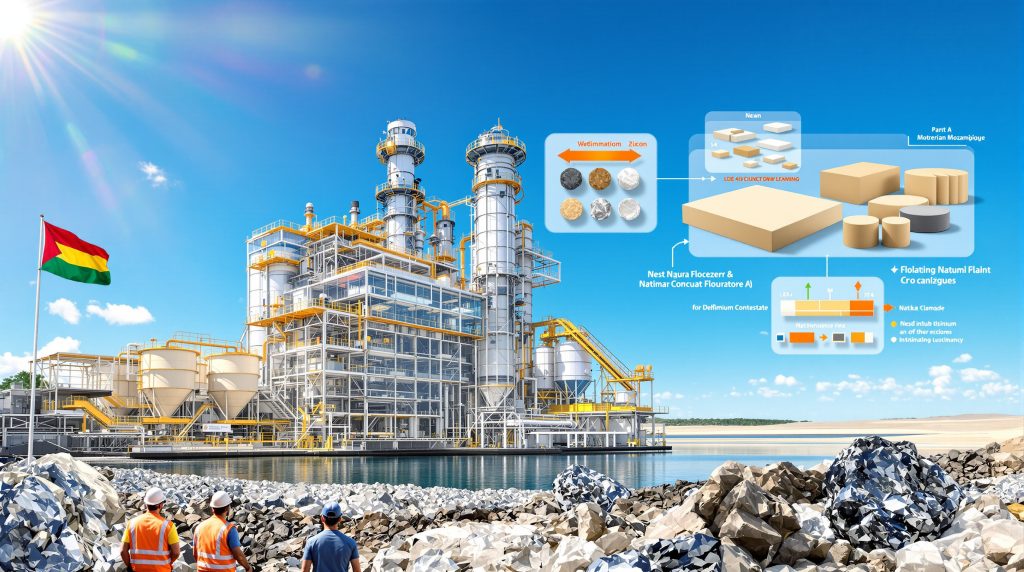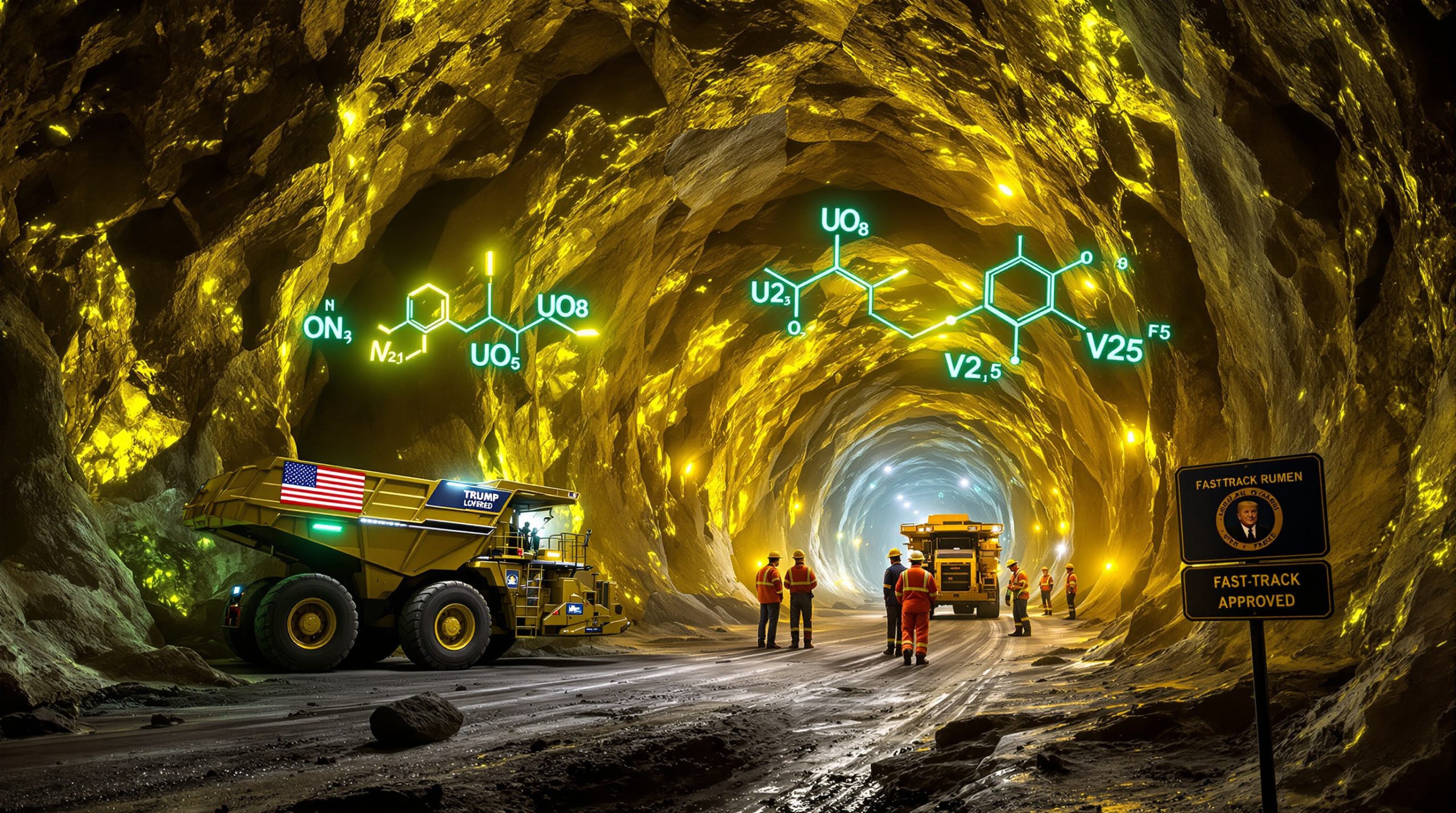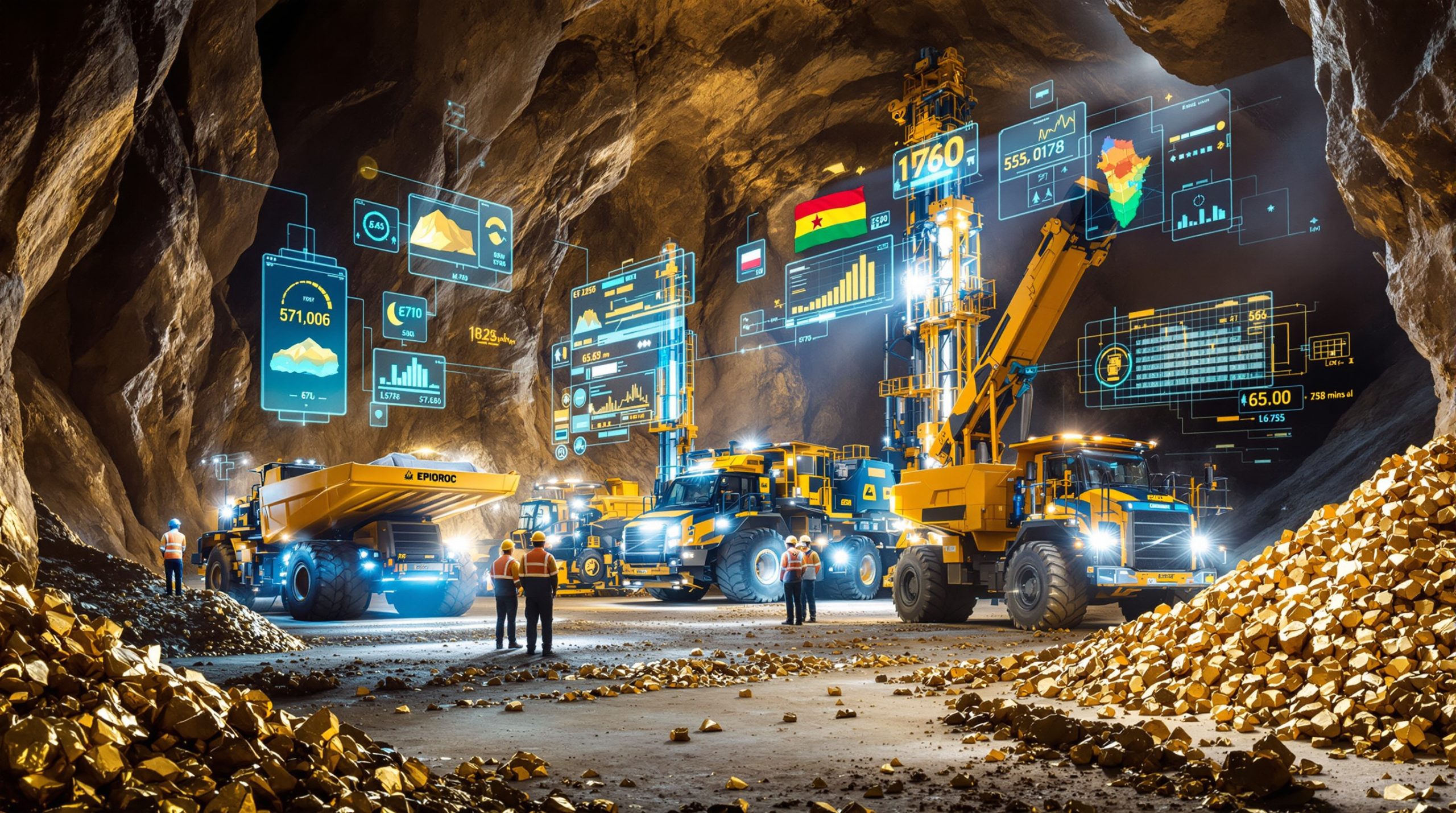Kenmare Resources Moma Plant Upgrade: Unlocking Decades of Production
The Moma Plant Upgrade represents a strategic $341 million investment by Kenmare Resources, transforming their flagship Wet Concentrator Plant A (WCP A) at the Moma titanium minerals mine in Mozambique. This comprehensive modernization enables the plant to process ore from Nataka, Moma's largest resource, securing decades of future production for the company.
Initiated in 2025, this upgrade represents one of the most significant developments in Kenmare's operational history. The project's successful commissioning on October 2, 2025, marks a pivotal moment in the company's long-term strategy to maintain its position as a leading global producer of titanium minerals and zircon.
What is the Moma Plant Upgrade Project?
The Moma Plant Upgrade equips Kenmare Resources' flagship facility to tackle the unique challenges presented by the Nataka orebody. The $341 million investment focuses on modernizing the Wet Concentrator Plant A (WCP A) through specialized equipment designed to process Nataka's distinctive mineral composition.
At its core, the upgrade centers on handling the higher slimes content (fine, clay-like particles) found in Nataka ore compared to the currently mined Namalope deposit. Without these modifications, processing Nataka's more challenging ore characteristics would be impossible at commercial scale.
"This upgrade work required detailed engineering and project management, with substantial prior planning, and it was completed while maintaining exceptional safety performance," noted Kenmare's Chief Operating Officer during the commissioning phase.
Key Components of the Upgrade
The upgrade includes several sophisticated engineering solutions specifically designed for Nataka's unique characteristics:
- Two new high-capacity dredges engineered specifically for Nataka's conditions
- Advanced feed preparation module featuring specialized upfront desliming circuit
- Enhanced processing capacity of 3,500 tonnes per hour (significantly higher than previous capacity)
- Newly constructed tailings storage facility designed to modern environmental standards
- Extensive supporting infrastructure to ensure smooth operations
Each component was carefully engineered to address the specific challenges presented by Nataka ore, especially its higher concentration of fine particles that could otherwise interfere with mineral separation processes.
Why is the Nataka Orezone Important?
The Nataka orezone represents the cornerstone of Kenmare's future at Moma, containing the vast majority of the mine's mineral reserves. This massive deposit provides Kenmare with operational certainty extending beyond 2050, making it the foundation of the company's long-term business strategy.
While the currently mined Namalope deposit will be depleted by 2026, Nataka's vast reserves ensure continuity of operations for decades to come. This longevity allows Kenmare to maintain its position as a key global supplier of titanium minerals and zircon to various industries worldwide.
Nataka's Strategic Value
Nataka's importance to Kenmare extends beyond simple resource volume:
- Contains over 80% of Moma's total mineral resources
- Provides production security for more than 25 years at current rates
- Represents one of Africa's largest titanium mineral deposits
- Allows for long-term supply contracts with major customers
- Strengthens Kenmare's position in the global mineral sands market
Technical Challenges of Nataka Ore
While Nataka's size is impressive, its ore characteristics present significant processing challenges:
- Significantly higher concentration of fine, clay-like particles (slimes)
- More complex mineral liberation requirements than Namalope ore
- Requires specialized desliming capabilities to maintain product quality
- Contains different mineral distribution patterns requiring adapted processing
- Presents unique materials handling challenges due to physical properties
These technical challenges necessitated the comprehensive plant upgrade, as conventional mineral sands processing equipment would be inadequate for maintaining efficient production with Nataka ore.
How is the Commissioning Process Progressing?
Kenmare successfully initiated commissioning of the upgraded WCP A on October 2, 2025, marking the transition from construction to operational phase. This carefully orchestrated process follows extensive testing of individual components and systems to ensure seamless integration.
The commissioning process is progressing according to schedule, with the plant expected to reach full design capacity by the end of 2025. This phased approach allows for systematic troubleshooting and optimization as each section of the upgraded plant comes online.
Commissioning Timeline and Expectations
The commissioning follows a methodical timeline with clearly defined milestones:
- Initial commissioning began October 2, 2025
- Progressive ramp-up throughout Q4 2025
- Full design capacity expected by December 31, 2025
- Planned production pause of 3-4 weeks (already factored into 2025 guidance)
- Regular production updates scheduled, with the next report due October 15, 2025
This carefully managed approach ensures that any operational issues can be addressed without disrupting the overall production schedule. The project has maintained an exceptional safety record throughout construction and commissioning, with zero lost-time injuries reported.
What Technical Innovations Enable Processing Nataka Ore?
The upgraded WCP A incorporates cutting-edge mineral processing technologies specifically designed to address the challenges of Nataka ore. These innovations represent significant advancements in mineral sands processing capabilities.
The most critical innovation is the specialized upfront desliming circuit, which removes fine clay particles before the main processing stages. This prevents these particles from interfering with the separation of valuable heavy minerals, ensuring consistent product quality despite the higher slimes content of Nataka ore.
Advanced Processing Technologies
The technical innovations integrated into the upgraded plant include:
- Multi-stage desliming system that removes fine particles through hydrocyclone technology
- Enhanced feed preparation module utilizing advanced mineral liberation techniques
- High-capacity dredges with specialized design features to handle variable material consistencies
- Optimized processing flowsheet tailored to Nataka's specific mineralogical characteristics
- Advanced water management systems to minimize consumption and environmental impact
- Improved recovery systems utilizing the latest spiral separator technology
These technologies collectively enable the plant to maintain efficient production despite the more challenging ore characteristics, setting new standards in data-driven mining operations.
When Will the Transition to Nataka Begin?
Kenmare has established a precise timeline for transitioning mining operations from the current Namalope zone to the Nataka orezone. This carefully planned transition ensures continuity of production while minimizing operational disruptions.
The transition will commence after WCP A completes mining in Namalope, which is projected to occur in the second quarter of 2026. From that point, a phased transition to Nataka will begin, with full operations in the new orezone expected by the end of 2027.
Transition Schedule
The transition to Nataka follows a detailed implementation plan:
- Q2 2026: Completion of mining in Namalope deposit
- Late Q2 2026: Commencement of transition to Nataka
- Q3 2026 – Q4 2027: 18-month phased transition period
- End of 2027: Full operations in Nataka orezone
- 2028 onwards: Optimization of Nataka mining operations
This gradual approach allows for systematic adaptation to the different ore characteristics while maintaining production levels throughout the transition period.
What Financial Investment Does the Upgrade Represent?
The WCP A upgrade and transition to Nataka represents Kenmare's largest capital investment project to date, with a total expenditure of $341 million. This comprehensive investment encompasses not only the physical plant upgrades but also supporting infrastructure necessary for long-term operations.
The financial commitment reflects Kenmare's confidence in the long-term value of the Nataka resource and the company's commitment to maintaining its position in the global market for titanium minerals and zircon.
Financial Overview
The investment includes several major components:
- Plant upgrade engineering and equipment: approximately $180 million
- New dredges and feed preparation modules: approximately $95 million
- Supporting infrastructure including tailings facility: approximately $40 million
- Transition costs and contingency: approximately $26 million
- Project completed within budget parameters established in initial planning
This substantial investment is expected to generate returns over decades of future production, securing Kenmare's position as a leading supplier of titanium minerals and zircon to global markets.
How Does This Upgrade Impact Kenmare's Production Outlook?
The successful commissioning of the upgraded WCP A is vital to Kenmare's long-term production strategy. By enabling efficient processing of Nataka ore, the upgrade ensures continuity of production as the company transitions from Namalope to its largest resource.
Without this upgrade, production would be severely constrained once Namalope reserves are depleted in 2026. The modernized plant ensures that Kenmare can maintain consistent output of high-quality titanium minerals and zircon for decades to come.
Production Implications
The upgrade impacts Kenmare's production in several key ways:
- Maintains consistent heavy mineral concentrate production beyond 2026
- Secures long-term supply of titanium minerals and zircon to global markets
- Enables efficient processing of Moma's largest resource at commercial scale
- Supports Kenmare's position as a key global supplier to pigment producers and other industries
- Provides production certainty for more than 25 years
While there will be a brief production pause during the final commissioning phase, this has been factored into the company's 2025 guidance and will not affect annual production targets.
What Environmental Considerations Were Addressed?
The WCP A upgrade and transition to Nataka incorporated comprehensive environmental management strategies to ensure sustainable operations with minimal ecological impact. These considerations were integrated into every aspect of the project design.
A key environmental component is the new tailings storage facility, designed to modern environmental standards for long-term stability and minimal environmental footprint. This facility incorporates advanced waste management solutions to maximize recycling and minimize freshwater consumption.
Environmental Management Approaches
The project's environmental management strategy includes:
- State-of-the-art tailings storage facility designed for minimal environmental impact
- Water recycling systems that reduce freshwater requirements by over 85%
- Progressive rehabilitation planning for mined areas to restore natural ecosystems
- Energy efficiency improvements in new equipment to reduce carbon footprint
- Comprehensive monitoring systems to ensure compliance with environmental standards
- Biodiversity protection measures for surrounding ecosystems
These environmental considerations ensure that Kenmare's operations remain sustainable throughout the decades of mining at Nataka, minimizing ecological impact while maximizing resource utilization.
What Does the Upgrade Mean for Kenmare's Future?
The successful implementation of the WCP A upgrade positions Kenmare for sustainable long-term operations at the Moma mine. This strategic investment secures the company's future production capabilities and strengthens its market position for decades to come.
By unlocking the potential of the Nataka orezone, Kenmare demonstrates both technical capability and strategic foresight in addressing the challenges of transitioning to more complex ore bodies. This positions the company favorably compared to competitors facing similar resource transitions.
Strategic Implications
The upgrade carries several strategic implications for Kenmare's future:
- Secures production certainty beyond 2050, far exceeding industry average mine life
- Demonstrates technical capability to handle increasingly challenging ore bodies
- Reinforces Kenmare's position as a reliable long-term supplier in global titanium minerals and zircon markets
- Provides foundation for potential future expansions as market demand evolves
- Represents the culmination of strategic planning that began more than a decade ago
The successful commissioning of this upgrade marks a pivotal moment in Kenmare's corporate history, transforming a significant challenge—the transition to more complex ore—into an opportunity for long-term operational stability. Furthermore, this project showcases significant mineral beneficiation opportunities that are increasingly important in the modern mining sector.
Frequently Asked Questions About the Moma Upgrade
What products does the Moma mine produce?
The Moma mine produces titanium minerals (primarily ilmenite and some rutile) and zircon. These minerals are used in a wide range of applications. Titanium minerals are primarily used in pigment production for paints, plastics, and paper, while zircon is used in ceramics, foundry applications, and various specialty products including zirconium chemicals.
How does wet concentration processing work?
Wet concentration is a gravity-based separation process used to extract heavy minerals from sand deposits. Dredges float on artificial ponds and excavate mineral sands, which are then pumped as a slurry to the wet concentrator plant. There, a series of gravity separation techniques—including spirals, cones, and classifiers—separate the heavier mineral particles from lighter sand, producing a heavy mineral concentrate for further processing.
Why was the plant upgrade necessary?
The upgrade was essential because Nataka ore contains significantly higher levels of fine, clay-like particles (slimes) than the currently mined Namalope deposit. These fine particles interfere with conventional mineral separation processes, reducing efficiency and product quality. The specialized desliming circuit and other modifications allow for efficient processing of this more challenging ore while maintaining product quality standards.
What is the significance of desliming in mineral sands processing?
Desliming is critical in mineral sands processing because fine clay particles can coat valuable minerals, interfering with separation processes and reducing recovery rates. The upfront desliming circuit removes these fine particles before the main separation stages, ensuring that gravity separation can efficiently extract the valuable heavy minerals. Without effective desliming, processing high-slimes ore like Nataka would be commercially unviable.
How does this project compare to previous Kenmare plant relocations?
Unlike previous projects where Kenmare physically relocated entire processing plants to new mining areas, the WCP A upgrade represents a comprehensive modernization of the existing plant in its current location. While previous relocations moved plants to access new ore bodies, this upgrade adapts the plant to process the significantly different ore characteristics of the adjacent Nataka deposit, presenting unique engineering challenges beyond simple relocation. This approach aligns with emerging industry innovation trends that focus on adapting existing infrastructure for evolving operational needs.
The Kenmare Moma Plant Upgrade also demonstrates significant mining decarbonisation benefits through its improved energy efficiency and reduced environmental footprint compared to building an entirely new processing facility.
Want to Know When the Next Major ASX Discovery Happens?
Discover how significant mineral findings, like Kenmare's Nataka orezone, can transform a company's future with Discovery Alert's proprietary Discovery IQ model that provides instant notifications on ASX mineral discoveries. Visit our dedicated discoveries page to understand the historical returns from major mineral discoveries and secure your 30-day free trial today.




